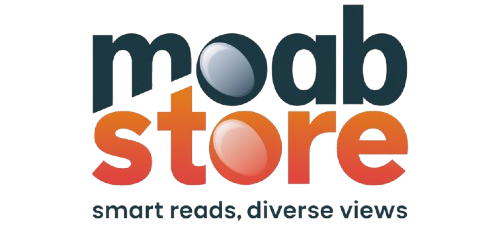As the landscape of health insurance continues to evolve, Dean Health Insurance stands at the forefront of innovation and customer-centric solutions. By 2025, the company is poised to implement significant changes that reflect the shifting needs of policyholders and the broader healthcare environment. With a commitment to providing comprehensive coverage and enhancing the overall experience for its members, Dean Health Insurance is adapting its offerings to include features like embedded deductibles.
This approach not only simplifies the insurance process but also aligns with the growing demand for transparency and affordability in healthcare. In an era where healthcare costs are a primary concern for many individuals and families, Dean Health Insurance recognizes the importance of making insurance more accessible and understandable. The introduction of embedded deductibles is a strategic move aimed at addressing these concerns while ensuring that policyholders receive the care they need without facing overwhelming financial burdens.
As we delve deeper into the concept of embedded deductibles, it becomes clear how this model can reshape the way policyholders interact with their health insurance plans and manage their healthcare expenses.
Key Takeaways
- Dean Health Insurance is introducing embedded deductibles in 2025 to help policyholders better manage their healthcare costs.
- Embedded deductibles are individual deductibles within a family plan that allow each family member to meet their own deductible before the plan starts paying for their care.
- The benefits of embedded deductibles include increased cost transparency, fairer cost-sharing among family members, and potential savings for policyholders.
- Policyholders in 2025 can expect embedded deductibles to provide more control over their healthcare spending and potentially lower out-of-pocket costs.
- Potential challenges and concerns with embedded deductibles include confusion about how they work, the potential for higher overall deductibles, and the need for careful planning to maximize their benefits.
Understanding Embedded Deductibles
Traditional Health Insurance Plans
In the past, health insurance plans featured a single deductible that applied to the entire family unit. This meant that all family members had to contribute to reaching that one deductible before any benefits kicked in.
How Embedded Deductibles Work
Embedded deductibles, on the other hand, allow for individual deductibles for each member of a family. This can be particularly beneficial in situations where one member may require more medical attention than others. For example, consider a family plan with an embedded deductible structure where each member has a $1,000 individual deductible within a larger family deductible of $3,000. If one child incurs medical expenses totaling $1,200, that child would only need to meet their individual deductible of $1,000 before insurance coverage begins for their additional expenses.
Benefits of Embedded Deductibles
Meanwhile, other family members can still access their benefits without having to wait for the entire family deductible to be met.
The Benefits of Embedded Deductibles

The advantages of embedded deductibles are manifold, particularly in terms of financial predictability and access to care. One of the most significant benefits is that it allows for greater flexibility in managing healthcare expenses. Families can navigate their healthcare needs more effectively, as individual members can utilize their benefits as soon as they meet their respective deductibles.
This structure can lead to improved health outcomes since individuals are more likely to seek preventive care and necessary treatments without the anxiety of high out-of-pocket costs. Moreover, embedded deductibles can enhance transparency in healthcare spending. Policyholders can easily track their individual expenses and understand how much they have left to pay before their insurance coverage kicks in.
This clarity can empower consumers to make informed decisions about their healthcare choices, leading to more proactive engagement with their health. Additionally, by reducing the financial burden on individual family members, embedded deductibles can foster a sense of security and peace of mind, allowing families to focus on their health rather than their finances.
How Embedded Deductibles Will Impact Policyholders in 2025
| Policyholder Impact | 2025 |
|---|---|
| Increased Out-of-Pocket Costs | Higher deductibles mean policyholders will have to pay more before insurance coverage kicks in. |
| Behavior Change | Policyholders may avoid seeking medical care to avoid reaching their high deductibles. |
| Financial Strain | Higher out-of-pocket costs may lead to financial strain for policyholders. |
| Insurance Utilization | Policyholders may be less likely to utilize their insurance benefits due to high deductibles. |
As Dean Health Insurance rolls out its embedded deductible model in 2025, policyholders can expect a transformative experience in how they manage their healthcare costs. The shift towards this model is likely to result in increased satisfaction among members who appreciate the ability to access benefits more readily. Families will no longer have to wait for one member’s extensive medical expenses to reach a collective deductible before receiving care; instead, each member’s needs can be addressed independently.
With the ability to access care sooner, individuals may be more inclined to seek preventive services such as annual check-ups or vaccinations. This proactive approach not only benefits individual health but also contributes to overall community wellness by reducing the prevalence of untreated conditions that could escalate into more serious health issues.
As a result, Dean Health Insurance’s adoption of embedded deductibles could lead to a healthier member base and potentially lower overall healthcare costs for both the insurer and its policyholders.
Potential Challenges and Concerns with Embedded Deductibles
While embedded deductibles offer numerous benefits, they are not without potential challenges and concerns that policyholders should be aware of as they navigate this new landscape. One significant issue is the complexity that may arise from understanding how individual deductibles interact with family deductibles. For some consumers, especially those who are not well-versed in insurance terminology, this structure may initially seem confusing.
It will be essential for Dean Health Insurance to provide clear communication and educational resources to help members fully grasp how embedded deductibles work. Another concern is the possibility that some policyholders may inadvertently underestimate their total healthcare costs due to the segmented nature of embedded deductibles. While individual deductibles can provide immediate access to benefits, they may also lead some families to overlook the cumulative expenses associated with multiple members reaching their deductibles simultaneously.
This could result in unexpected financial strain if not properly managed. Therefore, it will be crucial for Dean Health Insurance to offer tools and resources that help families budget effectively and anticipate their healthcare spending throughout the year.
Dean Health Insurance’s Approach to Embedded Deductibles in 2025

Empowering Policyholders
The adoption of embedded deductibles aligns with Dean Health Insurance’s mission to provide affordable and comprehensive health coverage tailored to the needs of its diverse membership base. This model aims to empower policyholders with greater control over their healthcare decisions while minimizing financial barriers.
Education and Support
To facilitate a smooth transition, Dean Health Insurance is investing in educational initiatives designed to inform members about how embedded deductibles function within their plans. This includes hosting informational webinars, creating user-friendly online resources, and providing personalized support through customer service representatives who are well-versed in the intricacies of the new structure.
Priority on Transparency and Accessibility
By prioritizing transparency and accessibility, Dean Health Insurance seeks to ensure that its members feel confident navigating their health insurance options and making informed choices about their care.
Tips for Navigating Embedded Deductibles in Dean Health Insurance
As policyholders prepare for the implementation of embedded deductibles in 2025, there are several strategies they can employ to navigate this new system effectively. First and foremost, it is essential for members to familiarize themselves with their specific plan details, including individual and family deductible amounts, out-of-pocket maximums, and covered services. Understanding these components will enable families to make informed decisions about when and how to seek care.
Additionally, keeping track of medical expenses throughout the year can help policyholders stay organized and anticipate when they might reach their individual deductibles. Utilizing budgeting tools or apps designed for healthcare spending can provide valuable insights into overall costs and help families plan for future medical needs. Furthermore, engaging with healthcare providers about costs upfront can lead to better financial planning and reduce surprises when bills arrive.
The Future of Embedded Deductibles in Dean Health Insurance
As Dean Health Insurance embraces embedded deductibles in 2025, it marks a significant step toward creating a more equitable and accessible healthcare system for its members. By prioritizing individual needs within family coverage plans, Dean Health Insurance is setting a precedent for how health insurance can evolve in response to consumer demands for transparency and affordability. The potential benefits of this model are vast, from improved access to care to enhanced member satisfaction.
While challenges may arise during this transition, proactive communication and education will play a crucial role in ensuring that policyholders feel empowered and informed about their options. As families adapt to this new structure, they will likely find that embedded deductibles not only simplify their healthcare experience but also promote healthier behaviors and better financial management. The future looks promising as Dean Health Insurance continues its commitment to innovation and excellence in serving its members’ needs.
FAQs
What is a dean health insurance with embedded deductibles?
Dean health insurance with embedded deductibles is a type of health insurance plan where individual deductibles are embedded within a family deductible. This means that once an individual within the family meets their own deductible, the insurance will start covering their expenses, even if the family deductible has not been met.
How does dean health insurance with embedded deductibles work?
In a dean health insurance plan with embedded deductibles, each family member has their own individual deductible. Once an individual meets their deductible, the insurance will start covering their expenses, even if the overall family deductible has not been met. This can be beneficial for families with members who have different healthcare needs.
What are the benefits of dean health insurance with embedded deductibles?
The main benefit of dean health insurance with embedded deductibles is that it can provide more flexibility and cost savings for families with varying healthcare needs. It allows individuals to access coverage once they meet their own deductible, rather than having to wait for the entire family deductible to be met.
Are there any drawbacks to dean health insurance with embedded deductibles?
One potential drawback of dean health insurance with embedded deductibles is that it may be more complex to understand and track individual deductibles within a family plan. Additionally, it may not be the most cost-effective option for families with relatively uniform healthcare needs.
How might dean health insurance with embedded deductibles change by 2025?
By 2025, dean health insurance with embedded deductibles may see advancements in technology and data tracking, making it easier for families to monitor and manage individual deductibles within a family plan. There may also be changes in regulations and healthcare policies that impact the structure and availability of these types of plans.




